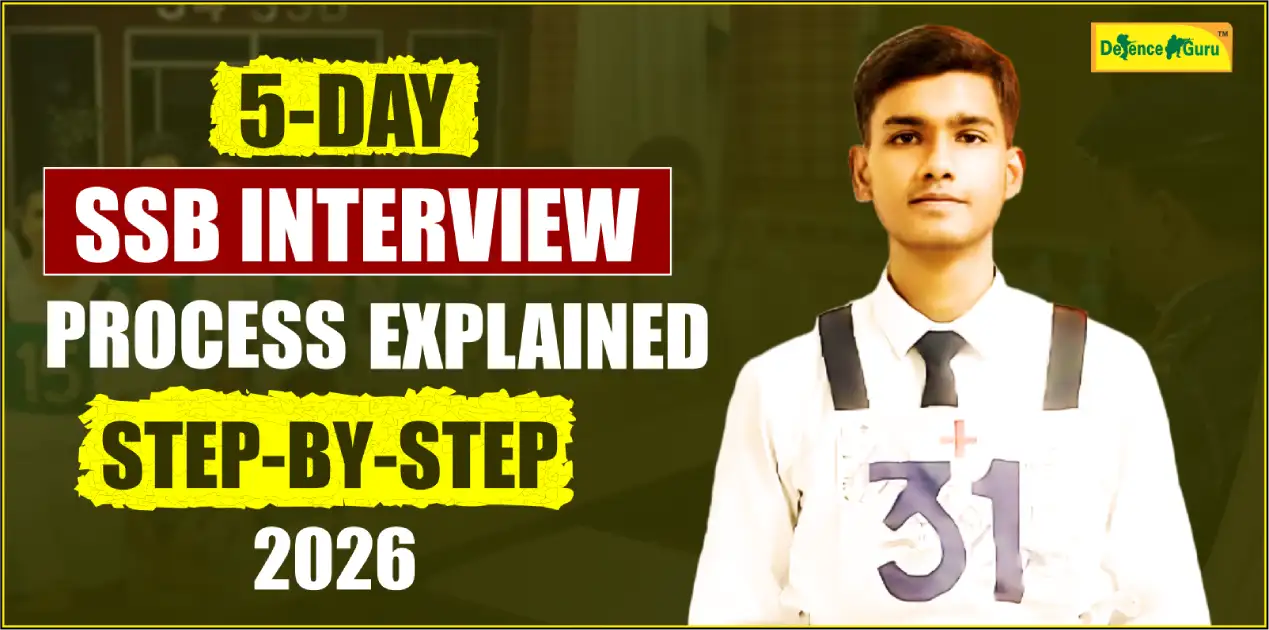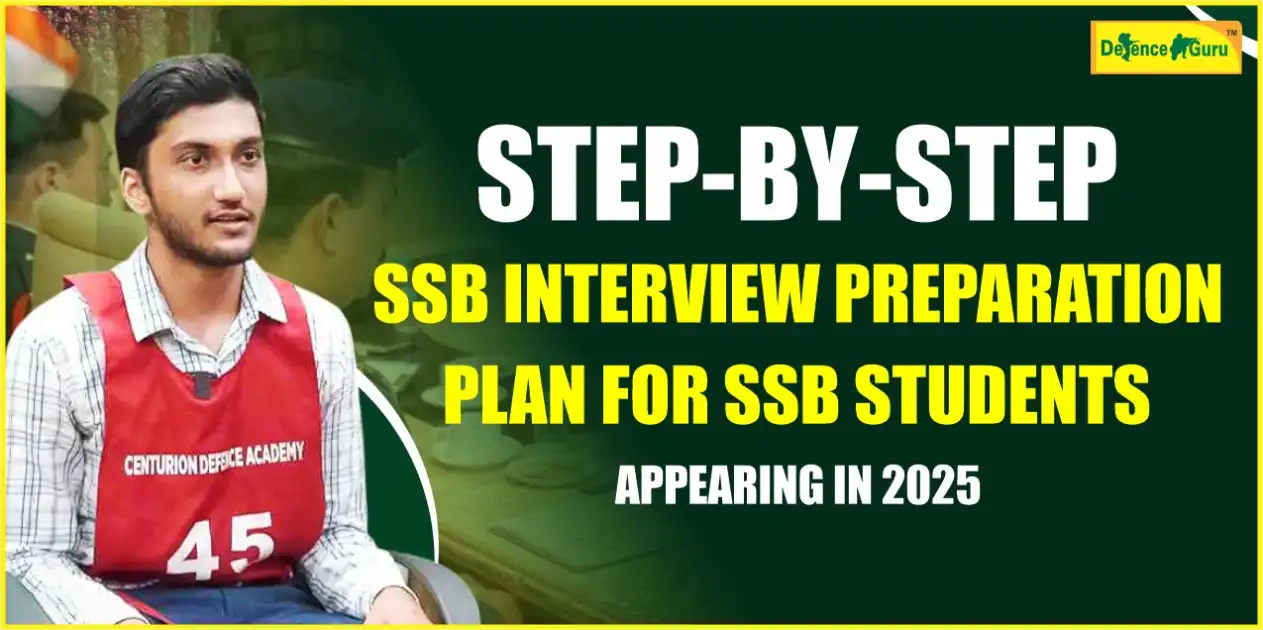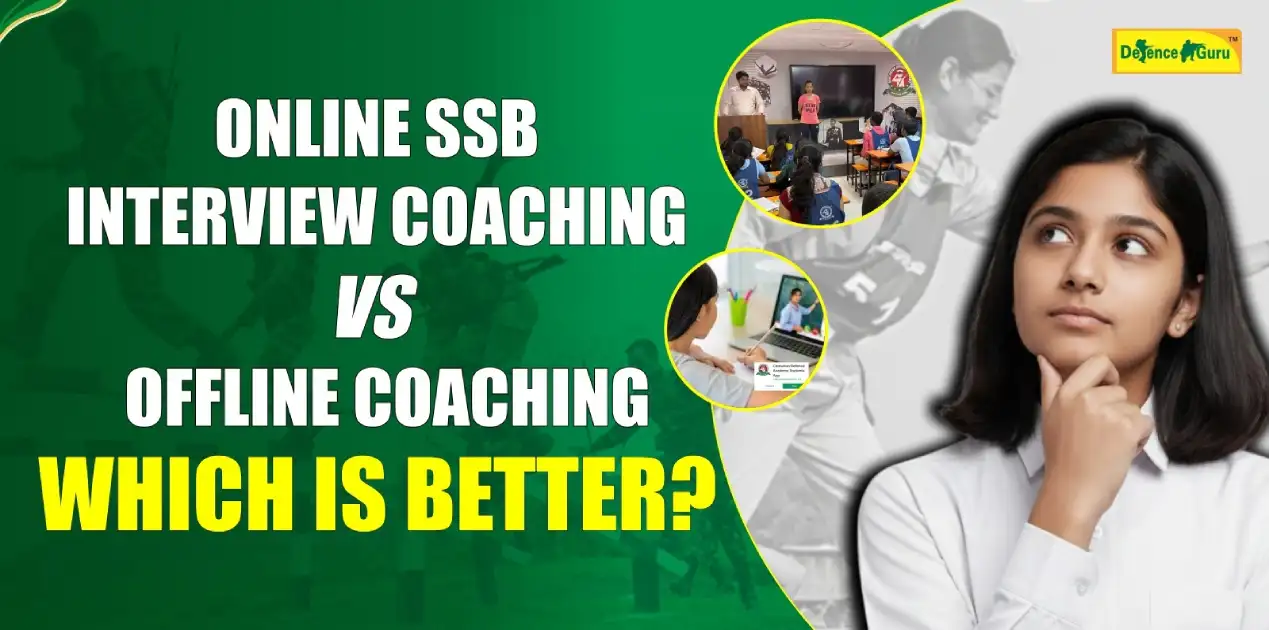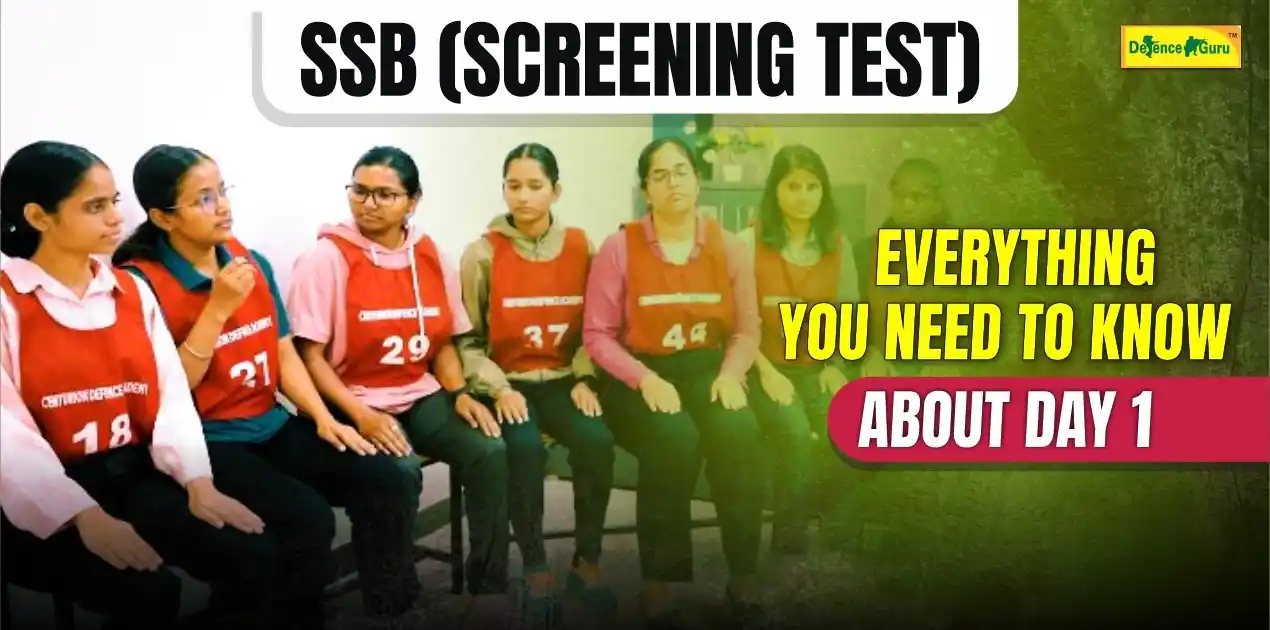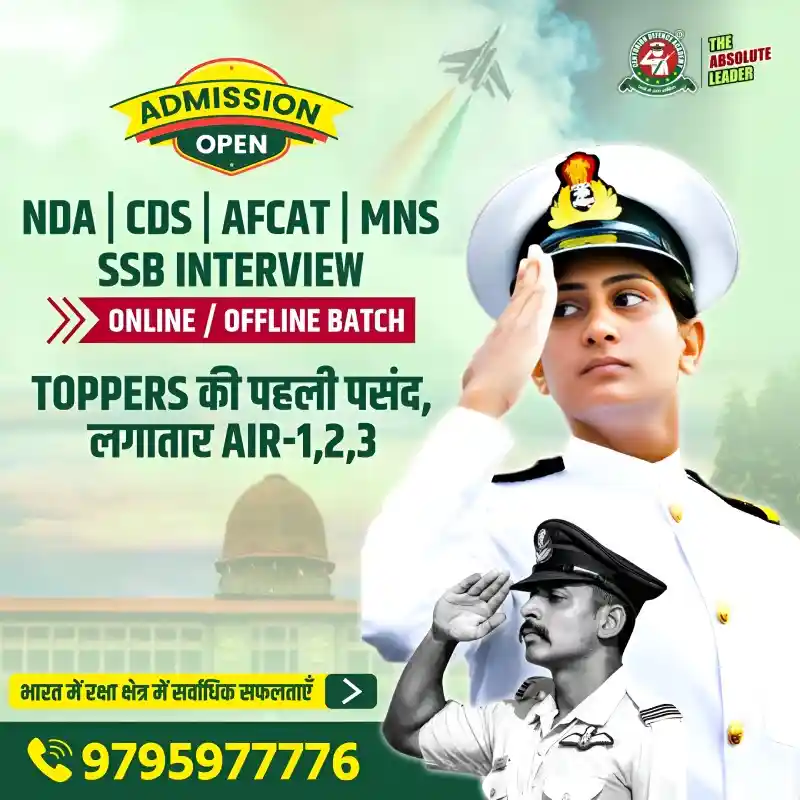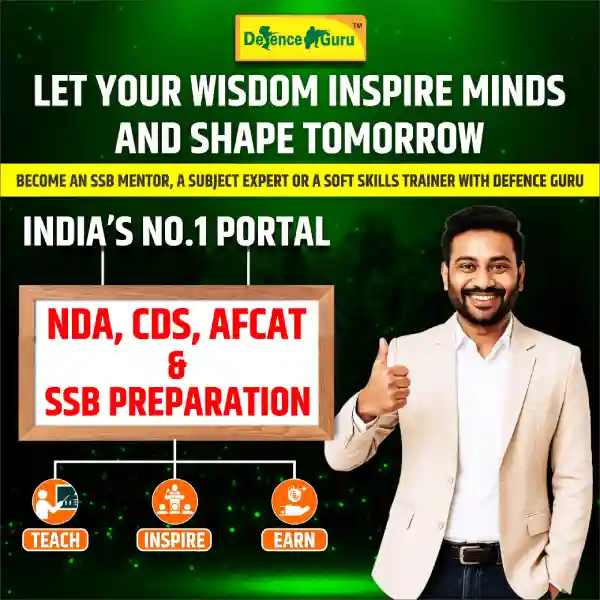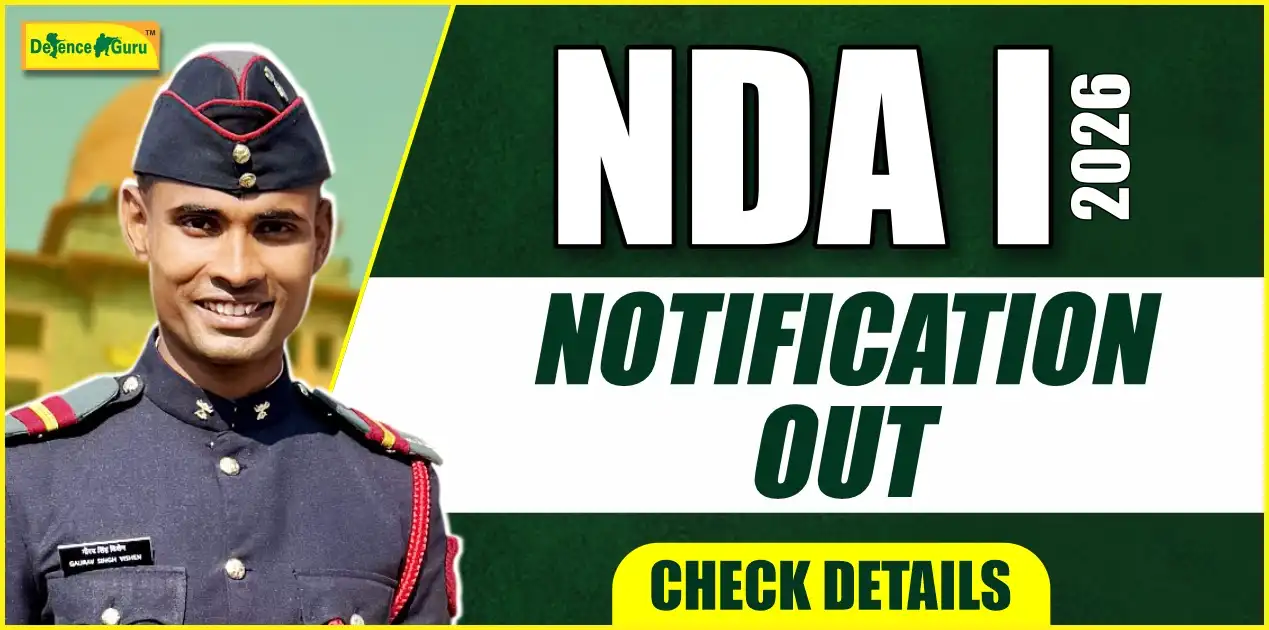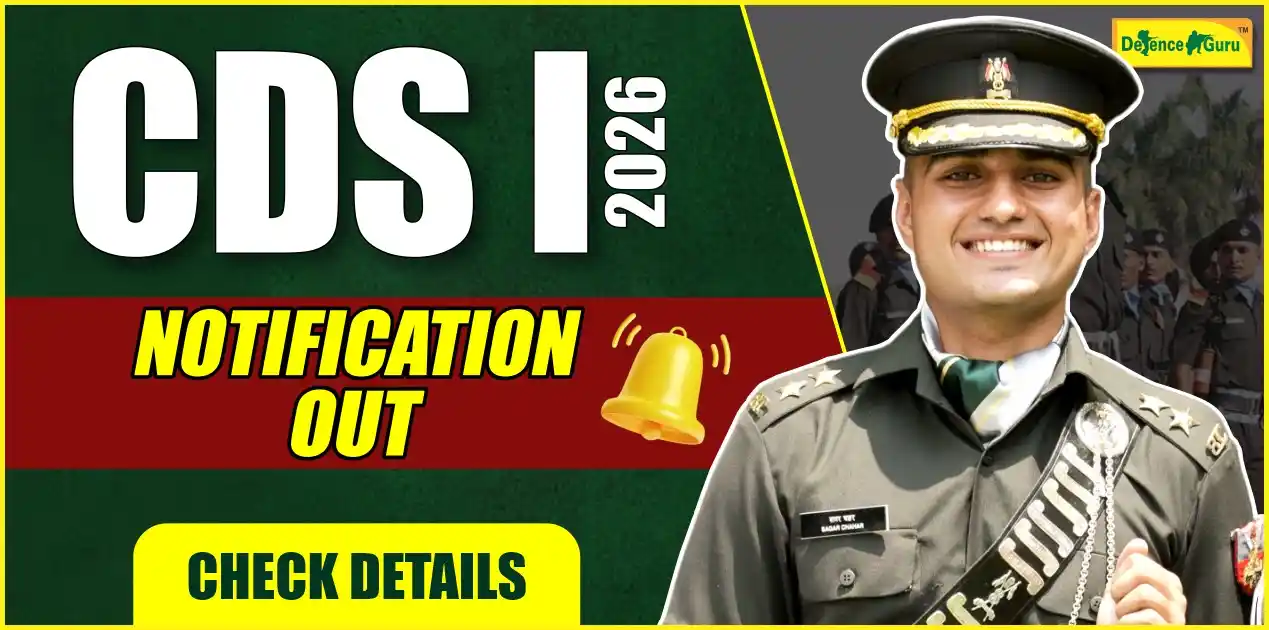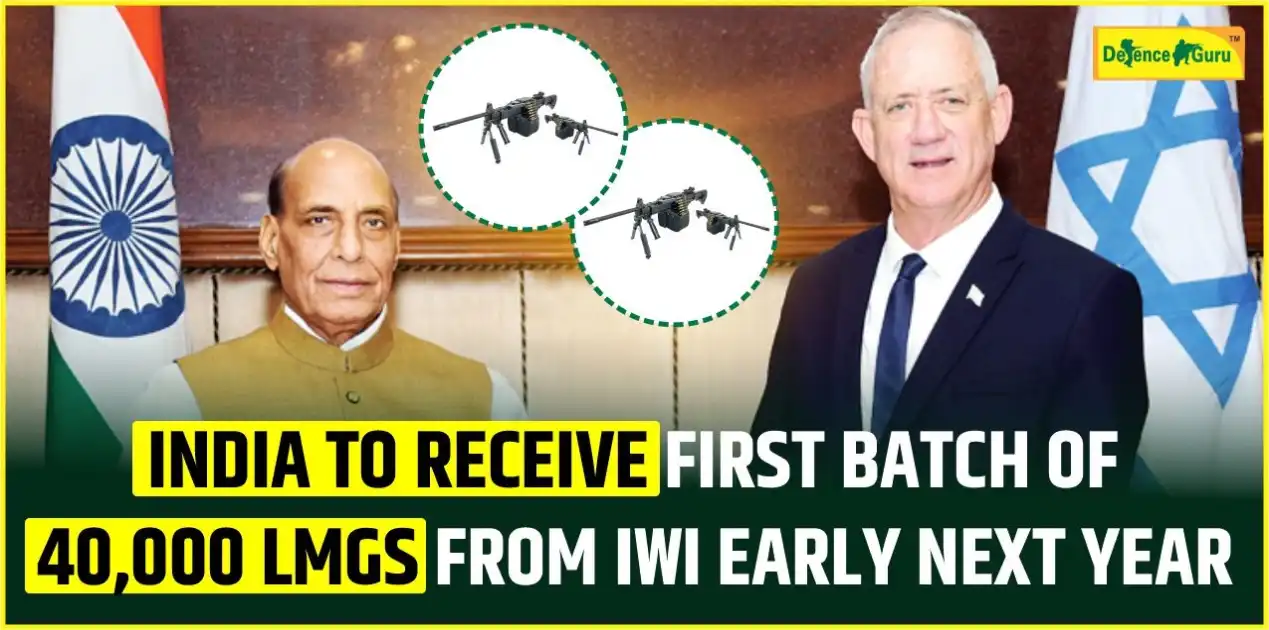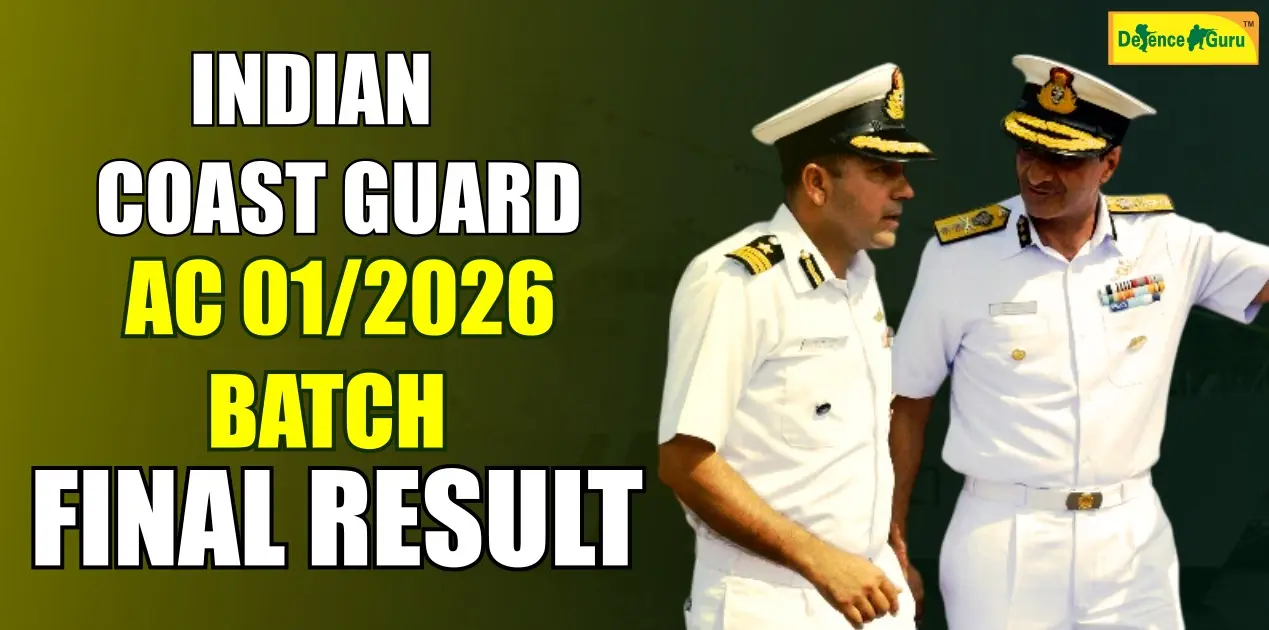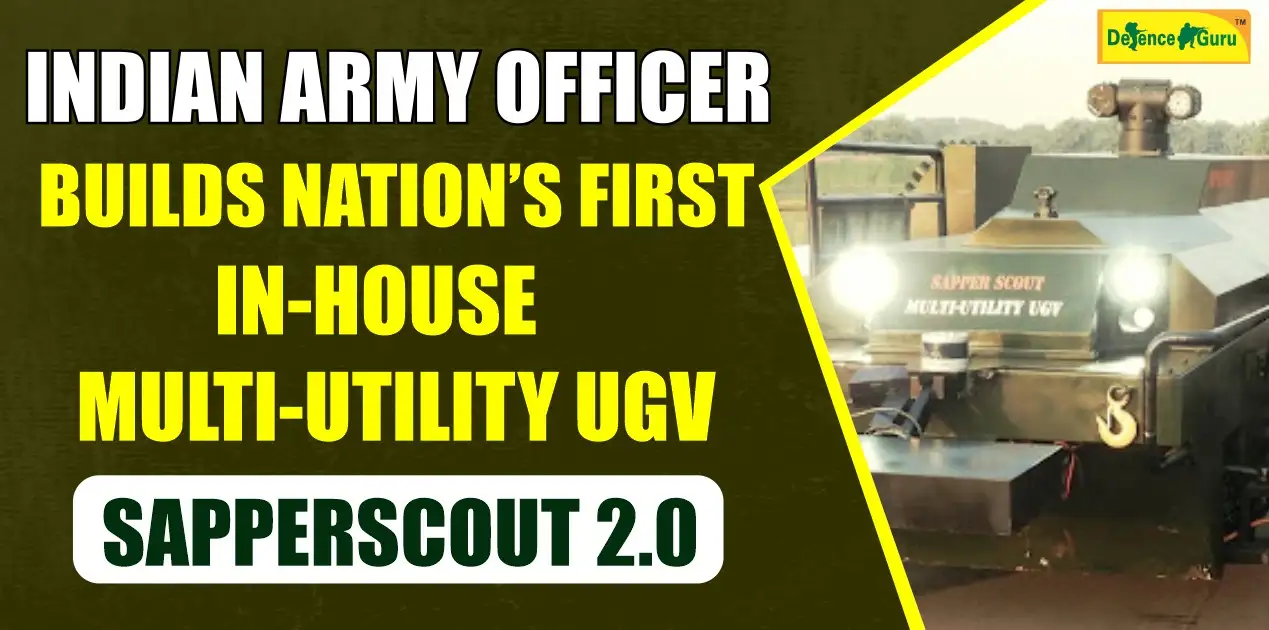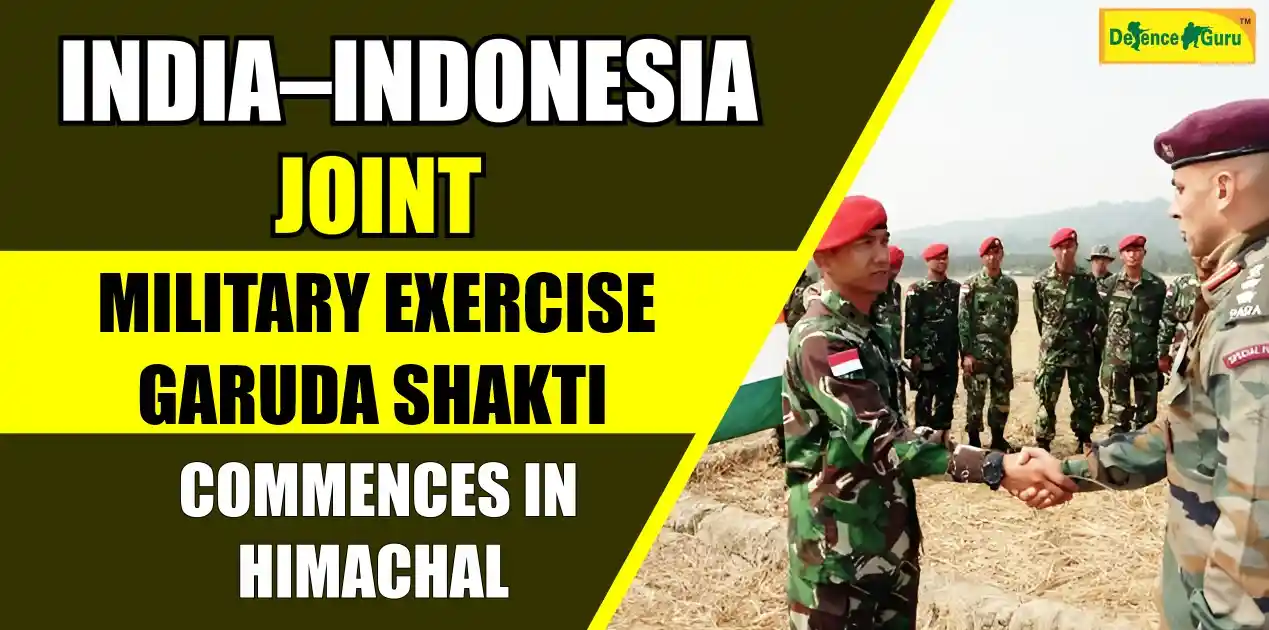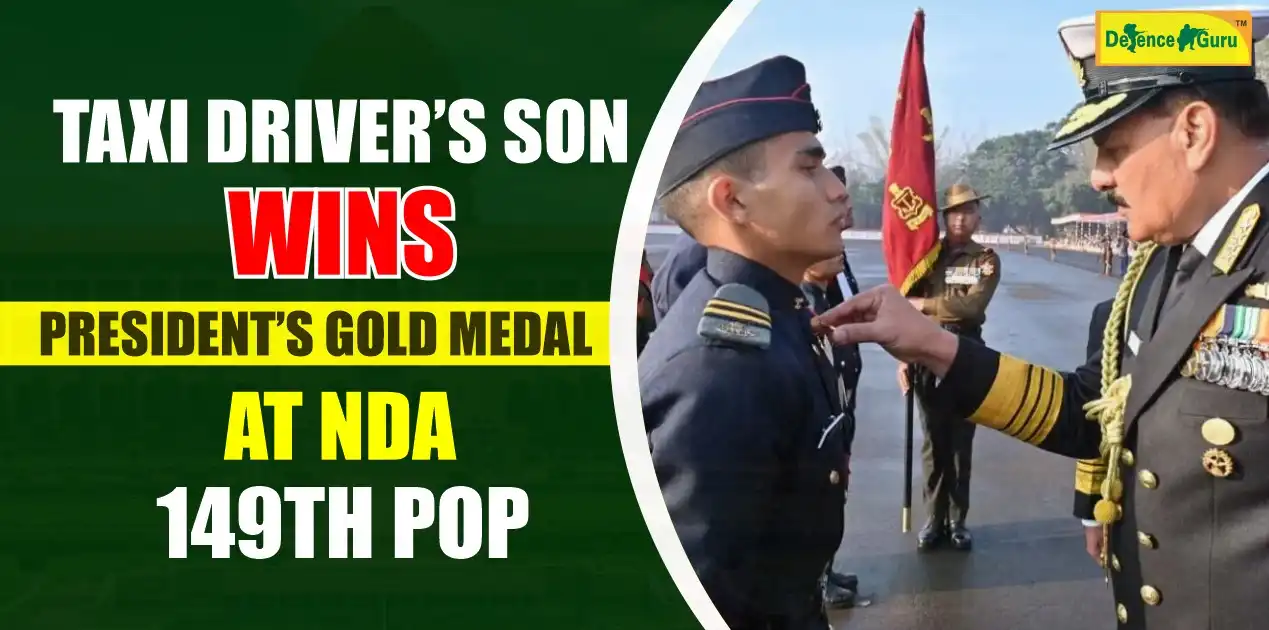Dreaming of becoming an officer in the Indian Armed Forces? Then the SSB Interview is the one challenge you absolutely have to cross. Whether you're preparing for NDA, CDS, AFCAT, or any other officer entry, you already know SSB isn't your typical exam; it's an intense 5-day assessment of your complete personality.
Sounds overwhelming? Sure, it can be. But here's some relief: once you get a clear picture of the day-wise schedule, understand what tests are coming, and know what the board actually expects from you, things start making sense.
So in this guide, we're breaking down the entire SSB Interview process for 2026 step by step, day by day, in plain, simple language that anyone can follow.
What is an SSB Interview and Why is it Unique?
The SSB Interview is different from typical competitive examinations, which test you only on academic experience; it looks at your personality, your personality, attitude, communication abilities, leadership abilities, level of confidence, and how well you would fit in an Armed Forces role.
It consists of three evaluators:
- Interviewing Officer
- Group Testing Officer (GTO)
- Psychologist
These three independently test you and then decide based on the combined results whether you are recommended or not.
There is no cramming, no memorisation, no “right or wrong” behaviour. The only secret is:
Be natural, be confident, and show officer-like qualities through your actions, not just words.
SSB Interview: Day-Wise Breakdown
Let’s now walk through each day of the SSB Interview in an easy step-by-step format.
DAY 1 – Screening Test (The First Elimination Round)
Day 1 is make-or-break. This is the day when most candidates get filtered out. If you clear this stage, you stay for four more days of detailed assessment. If not, you go home the same day.
Screening includes two major tests:
1. Officer Intelligence Rating (OIR Test)
This is a written test with reasoning questions, similar to what you see in competitive exams.
You can expect:
- Verbal reasoning
- Non-verbal reasoning
- Series completion
- Odd one out
- Coding-decoding
- Analogy questions
- Spatial reasoning
It is usually easy to moderate, and with regular practice, anyone can score well.
2. Picture Perception & Discussion Test (PP&DT)
This is the real challenge of Day 1 and where most candidates struggle.
How it works:
- You are shown a hazy picture for 30 seconds.
- You must write a story within 4 minutes based on what you observed.
- After that, you will narrate your story in a group.
- Then the group will discuss and try to reach a common story.
What assessors check:
- Observation skills
- Story clarity
- Communication
- Confidence
- Team contribution
- Listening skills
- Leadership in discussion without domination
Tip for clearing PP&DT
Speak clearly, confidently, and avoid shouting over others. Even if your story isn’t selected, contributing positively makes a strong impact.
Once the results are declared, selected candidates complete documentation and move to Day 2.
DAY 2 – Psychological Tests (Understanding Your Mind)
This day doesn’t require “preparation,” it requires self-awareness and honesty. The psychologist wants to understand your natural personality, not something you memorised from coaching notes.
Four major tests are conducted:
1. Thematic Apperception Test (TAT)
You will be shown 11 pictures + 1 blank slide.
For each image, you must write a story in 4 minutes.
The story should have:
- A main character (preferably someone like you)
- A situation
- A logical solution
- A positive outcome
Avoid dramatic stories and focus on realistic and practical solutions.
2. Word Association Test (WAT)
You will see 60 words one by one.
For each word, you have 15 seconds to write a sentence.
Sentences should reflect your natural thought process, not memorised lines like:
- “Duty is everything.”
- “Discipline leads to success.”
Instead, use simple, genuine expressions:
- Teamwork: I helped my classmates organise a group project on time.
- Adventure: I enjoy trekking and outdoor challenges.
Be crisp, positive, and real.
3. Situation Reaction Test (SRT)
- You will get 60 real-life situations.
- You must write your response to each.
Example:
“You see your friend cheating in an exam.”
A simple, natural response would be:
“I’ll stop him and remind him that success should come honestly.”
Your solutions should show:
- Responsibility
- Reasoning
- Clarity
- Balanced thinking
4. Self-Description Test (SDT)
You write what:
- Your parents think about you
- Teachers think about you
- Friends think about you
- Your own strengths and weaknesses
- What kind of person do you want to become
This section reveals how well you understand yourself.
A golden rule:
A golden rule:
Don’t write superhero-level statements. A balanced and self-improving personality is more impressive.
DAY 3 – GTO Day 1 (Group Activities Begin)
From Day 3 onward, you face the Group Testing Officer, who checks your behaviour in real-time activities.
Remember:
SSB wants leaders who help others succeed, not people who push everyone aside for personal victory.
Key tests on Day 3 include:
1. Group Discussion (GD)
You get two topics, usually current affairs or social issues.
Examples:
- Women in combat roles
- Youth and social media
- India’s defence modernisation
Speak sensibly, listen to others, and avoid shouting. The GTO checks:
- Communication
- Reasoning
- Team behavior
2. Group Planning Exercise (GPE / MGC)
You receive a military-type problem, like:
“A bridge is broken, a child is injured, a bomb blast is suspected…”
You must:
- Analyse the map
- Identify problems
- Prioritize solutions
- Plan using available resources
First, you write your solution individually, and then the group discusses to find a common plan.
3. Progressive Group Task (PGT)
Your group must cross several obstacles using:
- A plank
- A rope
- Wooden logs
- Helping materials
There is no trick; it’s teamwork. If you help others, share ideas, and stay active, the GTO notices it.
4. Group Obstacle Race (Snake Race)
This is a fun but energetic activity.
All teams compete carrying a huge rope called the snake.
You run through obstacles like:
- Long jumps
- Nets
- Zig-zag beams
The GTO checks team spirit and enthusiasm, not your athletic performance alone.
5. Lecturette
You get 3 minutes to prepare and 3 minutes to speak on a topic selected from a small list.
Avoid complicated vocabulary. Speak confidently, clearly, and structure your speech like:
- Introduction
- Main points
- Conclusion
DAY 4 – GTO Day 2
More individual and group challenges are conducted:
1. Individual Obstacles
You get 10 obstacles, like:
- Monkey crawl
- Rope climbing
- Triple wall
- Tarzan swing
- Balance beam
You have 3 minutes to complete as many as possible. The goal is not performance comparison, but:
- Determination
- Courage
- Willpower
2. Command Task
The GTO assigns you an obstacle and allows you to choose two subordinates (other candidates).
These tests:
- Leadership
- Decision-making
- Clarity of instructions
If you try to dominate or order people like a dictator, it backfires. Give firm but respectful instructions while remaining calm.
3. Final Group Task (FGT)
The entire group once again works together to cross a bigger obstacle. This is the last GTO activity and shows:
- Cooperation
- Maturity
- Team focus
Personal Interview (PI)
The interview may happen on Day 3, Day 4, or even Day 2, depending on your schedule.
The Interviewing Officer speaks to you casually, like a conversation, but is noting:
- How truthful are you
- How well do you know yourself
- Your upbringing
- Responsibility level
- General awareness
Common areas are:
- Family background
- Academics
- Hobbies
- Friend circle
- Situational questions
- Why do you want to join the Armed Forces
The most important rule:
Never lie. The interviewing officer already knows more about you than you think.
DAY 5 – Conference Day (The Final Verdict)
This is the last day when all three assessors, the Interviewing Officer, GTO, and Psychologist, sit together and review your entire performance.
1–2 Minute Interaction
You will be called into a conference room and may face questions like:
- How was your stay?
- Which tests did you perform best in?
- What would you improve next time?
It’s not an interview, just a final interaction.
After all candidates complete this, the results are announced.
What Happens After the Recommendation?
If you are recommended:
- Medical tests follow (usually 5–7 days).
If found medically fit:
- You wait for the final merit list and joining instructions.
If not recommended, don’t worry, every attempt makes you better. Thousands improve and get recommended in later attempts.
What SSB Wants in a Candidate
SSB does not look for toppers, gym champions, or English experts. It looks for a candidate who:
- Is responsible
- Thinks clearly
- Stays calm under pressure
- Works well with others
- Is confident and positive
- Has clarity of purpose
- Can lead without dominating
You don’t have to become someone else, just become a better version of yourself.
Final Words
The SSB Interview - 5 Day Process is not an examination of your knowledge but rather a 360 assessment of who you are altogether. After you understand the processes and expectations, you will not be fearful any longer.
Be yourself, be confident, and remember this:
The Armed Forces do not look for perfect candidates; they seek candidates they can develop into real leaders.
With practice, preparation, self-development and guidance, a recommendation is very possible.
If you are going to SSB for 2026, you should start preparing early, understand your strengths and work on your weaknesses to build a personality that the Indian Armed Forces would be proud to call theirs.
All the best, future officers
Dreaming of becoming an officer in the Indian Armed Forces? Then the SSB Interview is the one challenge you absolutely have to cross. Whether you're preparing for NDA, CDS, AFCAT, or any other officer entry, you already know SSB isn't your typical exam; it's an intense 5-day assessment of your complete personality.
Sounds overwhelming? Sure, it can be. But here's some relief: once you get a clear picture of the day-wise schedule, understand what tests are coming, and know what the board actually expects from you, things start making sense.
So in this guide, we're breaking down the entire SSB Interview process for 2026 step by step, day by day, in plain, simple language that anyone can follow.
What is an SSB Interview and Why is it Unique?
The SSB Interview is different from typical competitive examinations, which test you only on academic experience; it looks at your personality, your personality, attitude, communication abilities, leadership abilities, level of confidence, and how well you would fit in an Armed Forces role.
It consists of three evaluators:
- Interviewing Officer
- Group Testing Officer (GTO)
- Psychologist
These three independently test you and then decide based on the combined results whether you are recommended or not.
There is no cramming, no memorisation, no “right or wrong” behaviour. The only secret is:
Be natural, be confident, and show officer-like qualities through your actions, not just words.
SSB Interview: Day-Wise Breakdown
Let’s now walk through each day of the SSB Interview in an easy step-by-step format.
DAY 1 – Screening Test (The First Elimination Round)
Day 1 is make-or-break. This is the day when most candidates get filtered out. If you clear this stage, you stay for four more days of detailed assessment. If not, you go home the same day.
Screening includes two major tests:
1. Officer Intelligence Rating (OIR Test)
This is a written test with reasoning questions, similar to what you see in competitive exams.
You can expect:
- Verbal reasoning
- Non-verbal reasoning
- Series completion
- Odd one out
- Coding-decoding
- Analogy questions
- Spatial reasoning
It is usually easy to moderate, and with regular practice, anyone can score well.
2. Picture Perception & Discussion Test (PP&DT)
This is the real challenge of Day 1 and where most candidates struggle.
How it works:
- You are shown a hazy picture for 30 seconds.
- You must write a story within 4 minutes based on what you observed.
- After that, you will narrate your story in a group.
- Then the group will discuss and try to reach a common story.
What assessors check:
- Observation skills
- Story clarity
- Communication
- Confidence
- Team contribution
- Listening skills
- Leadership in discussion without domination
Tip for clearing PP&DT
Speak clearly, confidently, and avoid shouting over others. Even if your story isn’t selected, contributing positively makes a strong impact.
Once the results are declared, selected candidates complete documentation and move to Day 2.
DAY 2 – Psychological Tests (Understanding Your Mind)
This day doesn’t require “preparation,” it requires self-awareness and honesty. The psychologist wants to understand your natural personality, not something you memorised from coaching notes.
Four major tests are conducted:
1. Thematic Apperception Test (TAT)
You will be shown 11 pictures + 1 blank slide.
For each image, you must write a story in 4 minutes.
The story should have:
- A main character (preferably someone like you)
- A situation
- A logical solution
- A positive outcome
Avoid dramatic stories and focus on realistic and practical solutions.
2. Word Association Test (WAT)
You will see 60 words one by one.
For each word, you have 15 seconds to write a sentence.
Sentences should reflect your natural thought process, not memorised lines like:
- “Duty is everything.”
- “Discipline leads to success.”
Instead, use simple, genuine expressions:
- Teamwork: I helped my classmates organise a group project on time.
- Adventure: I enjoy trekking and outdoor challenges.
Be crisp, positive, and real.
3. Situation Reaction Test (SRT)
- You will get 60 real-life situations.
- You must write your response to each.
Example:
“You see your friend cheating in an exam.”
A simple, natural response would be:
“I’ll stop him and remind him that success should come honestly.”
Your solutions should show:
- Responsibility
- Reasoning
- Clarity
- Balanced thinking
4. Self-Description Test (SDT)
You write what:
- Your parents think about you
- Teachers think about you
- Friends think about you
- Your own strengths and weaknesses
- What kind of person do you want to become
This section reveals how well you understand yourself.
A golden rule:
A golden rule:
Don’t write superhero-level statements. A balanced and self-improving personality is more impressive.
DAY 3 – GTO Day 1 (Group Activities Begin)
From Day 3 onward, you face the Group Testing Officer, who checks your behaviour in real-time activities.
Remember:
SSB wants leaders who help others succeed, not people who push everyone aside for personal victory.
Key tests on Day 3 include:
1. Group Discussion (GD)
You get two topics, usually current affairs or social issues.
Examples:
- Women in combat roles
- Youth and social media
- India’s defence modernisation
Speak sensibly, listen to others, and avoid shouting. The GTO checks:
- Communication
- Reasoning
- Team behavior
2. Group Planning Exercise (GPE / MGC)
You receive a military-type problem, like:
“A bridge is broken, a child is injured, a bomb blast is suspected…”
You must:
- Analyse the map
- Identify problems
- Prioritize solutions
- Plan using available resources
First, you write your solution individually, and then the group discusses to find a common plan.
3. Progressive Group Task (PGT)
Your group must cross several obstacles using:
- A plank
- A rope
- Wooden logs
- Helping materials
There is no trick; it’s teamwork. If you help others, share ideas, and stay active, the GTO notices it.
4. Group Obstacle Race (Snake Race)
This is a fun but energetic activity.
All teams compete carrying a huge rope called the snake.
You run through obstacles like:
- Long jumps
- Nets
- Zig-zag beams
The GTO checks team spirit and enthusiasm, not your athletic performance alone.
5. Lecturette
You get 3 minutes to prepare and 3 minutes to speak on a topic selected from a small list.
Avoid complicated vocabulary. Speak confidently, clearly, and structure your speech like:
- Introduction
- Main points
- Conclusion
DAY 4 – GTO Day 2
More individual and group challenges are conducted:
1. Individual Obstacles
You get 10 obstacles, like:
- Monkey crawl
- Rope climbing
- Triple wall
- Tarzan swing
- Balance beam
You have 3 minutes to complete as many as possible. The goal is not performance comparison, but:
- Determination
- Courage
- Willpower
2. Command Task
The GTO assigns you an obstacle and allows you to choose two subordinates (other candidates).
These tests:
- Leadership
- Decision-making
- Clarity of instructions
If you try to dominate or order people like a dictator, it backfires. Give firm but respectful instructions while remaining calm.
3. Final Group Task (FGT)
The entire group once again works together to cross a bigger obstacle. This is the last GTO activity and shows:
- Cooperation
- Maturity
- Team focus
Personal Interview (PI)
The interview may happen on Day 3, Day 4, or even Day 2, depending on your schedule.
The Interviewing Officer speaks to you casually, like a conversation, but is noting:
- How truthful are you
- How well do you know yourself
- Your upbringing
- Responsibility level
- General awareness
Common areas are:
- Family background
- Academics
- Hobbies
- Friend circle
- Situational questions
- Why do you want to join the Armed Forces
The most important rule:
Never lie. The interviewing officer already knows more about you than you think.
DAY 5 – Conference Day (The Final Verdict)
This is the last day when all three assessors, the Interviewing Officer, GTO, and Psychologist, sit together and review your entire performance.
1–2 Minute Interaction
You will be called into a conference room and may face questions like:
- How was your stay?
- Which tests did you perform best in?
- What would you improve next time?
It’s not an interview, just a final interaction.
After all candidates complete this, the results are announced.
What Happens After the Recommendation?
If you are recommended:
- Medical tests follow (usually 5–7 days).
If found medically fit:
- You wait for the final merit list and joining instructions.
If not recommended, don’t worry, every attempt makes you better. Thousands improve and get recommended in later attempts.
What SSB Wants in a Candidate
SSB does not look for toppers, gym champions, or English experts. It looks for a candidate who:
- Is responsible
- Thinks clearly
- Stays calm under pressure
- Works well with others
- Is confident and positive
- Has clarity of purpose
- Can lead without dominating
You don’t have to become someone else, just become a better version of yourself.
Final Words
The SSB Interview - 5 Day Process is not an examination of your knowledge but rather a 360 assessment of who you are altogether. After you understand the processes and expectations, you will not be fearful any longer.
Be yourself, be confident, and remember this:
The Armed Forces do not look for perfect candidates; they seek candidates they can develop into real leaders.
With practice, preparation, self-development and guidance, a recommendation is very possible.
If you are going to SSB for 2026, you should start preparing early, understand your strengths and work on your weaknesses to build a personality that the Indian Armed Forces would be proud to call theirs.
All the best, future officers
Read more:
Top SSB Interview Coaching Institute in India for Defence Aspirants
Step-by-Step Guide to Prepare for SSB Interview After NDA-2 2025 Written Exam Result

